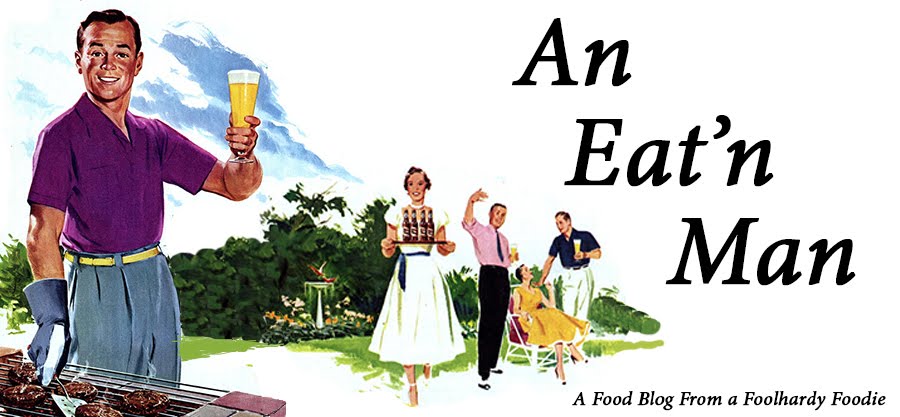I made a swing through Eastern and Central Europe in 1996, mainly the Czech Republic, but I also touched on Austria and Hungary, and I have to say I loved them all, but particularly the latter. Hungary was fascinating. I spent a few days in Budapest, a beautiful, exotic city with wonderful people and some amazing food. It was here that I discovered the spice that I've had an affinity for ever since---Paprika.
Yes, paprika--it seems it is the national spice of Hungary. Most restaurants had a paprika shaker on the table, in addition to salt and pepper, and I found I liked its slightly sweet, slightly piquant flavor (although there are some intensely hot varieties as well) and the way it brightened up a dish with its intense red color.
So, if you want to try a dish in which paprika really sings as the key ingredient, you could do no better than whipping up the national dish of Hungary: Goulash. It's basically a beef and vegetable stew, although I have been served some pretty soupy versions here in The States. However, what I got in Budapest was thick, almost more like beef chunks with a rich sauce than a soup or stew, and I've decided this is how I like it. My recipe will pursue this version, with a little bit of retro flair as I sourced some of it from one of my retro cook books, pictured below.
I also discovered that you can get paprika in lots of different forms in Hungary, so we will layer and texture the flavor of our Goulash with different types of paprika. More on that to come.
Hungarian Goulash.
2 Lbs Stewing Beef, Cubed
3 Tablespoons Cooking Oil
1 Large Onion, Diced
1/4 Cup Flour, Sifted
3/4 Cup White Wine
1/4 Cup Sweet Paprika
4 Cups Beef Broth
1/4 Cup Smoked Paprika
1 Tablespoons Univer Goulash Cream, Hot
1 Tablespoon Sweet Anne Paprika Paste
1 Teaspoon Strong Steven Paprika Paste
1 Teaspoon Red Gold Paprika Cream, Hot (Optional, for hotter Goulash)
2 Potatoes, Peeled and Cubed
3-4 Carrots, Sliced
Salt and Pepper to Taste
Egg Noodles
Cube your beef.
Here I'm using eye of round, but bottom round or even chuck will work fine. Tougher cuts that stand up to long stewing times are what you want here.
Heat the cooking oil in a large stew pot or Dutch oven, then add the beef when the oil is hot:
Brown the beef and then reserve.
Dice your onion and add it to the oil and beef drippings. Sauté the onion until it begins to turn clear and brown slightly.
Sift the flour over the onion
and cook for a minute or two. Add the white wine
and simmer until reduced by half Add the sweet paprika:
And then let everything simmer for a minute or two. Admire the beautiful color of this most Hungarian of spices:
Add the beef broth.
Bring to a boil, then add the beef cubes back to the mix.
Reduce to a simmer and then add the smoked paprika.
Adding this and the other paprikas after the broth addition will help to preserve some of their more delicate flavors, particularly the smoked paprika that will make your flavor reminiscent of Goulash cooked in a bogrács, or traditional cooking cauldron, over an open fire.
Speaking of our other paprikas: Did I say I'm a fan? When I was in Budapest, I was doing a bit of souvenir shopping and I came across a jar that looked like this:
When I asked the proprietor what it was, he said in broken English, 'to put in soup.' Well, that didn't really tell me what it was, but it was good enough for me. I bought some and brought it home. It was a like a nice, wonderful, creamy hot paste
that did indeed go well in soups, but also lots of other things. When I finally ran out, I took to the internet (still in its infancy back then) and found Otto's Hungarian Deli, where I found I could order this stuff and lots of other goodies. They're still around, and I don't think they've updated the website since the 90s, but its a great place to get some of the pastes and creams in this recipe.
Well, as you can see by the photo below, I keep quite a bit of paprika pastes and creams in stock in my larder.
Yes, I know it seems redundant, but each of these has a slightly different flavor and level or heat, and using a little bit of each of them give this goulash multiple layers of flavor. If you really want to make some goulash with a wow factor, try to get your hands on at least some of this stuff. If not Ottos, then I've also seen some of the Univer products at Central Market.
Add your hot and sweet pastes
And then the Goulash Cream.
This stuff in particular has a nice, unique blend of flavors that really make the goulash.
Let this simmer for an hour or so, then add the potatoes
And the carrots
Then Cover:
And let that go another hour
At this point the meat should be nice and tender, and the goulash should have thickened up nicely. If it's still too liquid-y, mid a little cornstarch with warm water and add it to the goulash. It will then thicken up nicely.
Here we've served the goulash over some basic egg noodles.
You sometimes see it with elbow macaroni mixed in instead, but that just looks a little too 'Hamburger Helper-ish' to me.
Until next time,
Egészségére (I believe that's Hungarian for "Cheers")
Chris












































